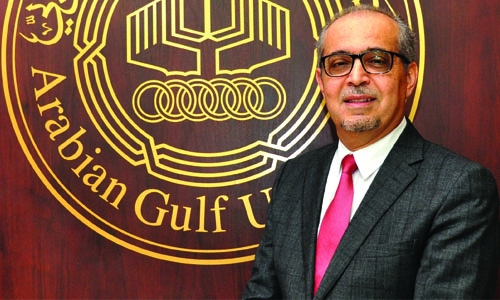Breakthrough!
Manama : Researchers at the Arabian Gulf University have made a breakthrough in their chase to develop a biological drug capable of controlling the blood cells that activate upon inflammation and cause negative effects.
The drug, according to the Professor of Biomedical Technology at Arabian Gulf University (AGU), Dean of the College of Graduate Studies, Professor Mohammed Al Dahmani Fathallah, is capable of controlling blood cells that result in numerous diseases in which inflammation plays a prominent role.
“The drug is capable of controlling the cells that activate upon inflammation and cause negative effects, which are the major causes of numerous diseases in the immune system, the brain and nervous system, cancers, heart diseases, and other diseases,” the statement said.
The compound is announced to have proven its effectiveness in pre-clinical stages and is ready for human trials.
Work is also underway to form partnerships with pharmaceutical companies and to secure intellectual property rights to move this drug into human clinical trials, and its subsequent release into the market.
The findings were presented at the World Hematology Conference, held early May 2017 in Barcelona by Prof. Mohamed Al Dahmani Fathallah.
The development follows the unraveling of inflammation molecular codes that affect the body by a team of researchers at the university, two-years ago.
Explaining further, Professor Fathallah said that the compound derives its components from the human immune system through the stimulation of protein compounds without chemical intervention.
Al Dahmani Fathallah added that the discovery is the result of cumulative research of over 20-years, during which collaborations with several research centres in major international universities such as Harvard University in the USA, Harvey Williams University in Britain, and Pasteur Institute in Tunisia, took place.
Techniques used include genetic engineering, computational approaches in addition to the use of “intra Vital” camera technology to monitor the interaction of the compound in the arteries.
Related Posts

